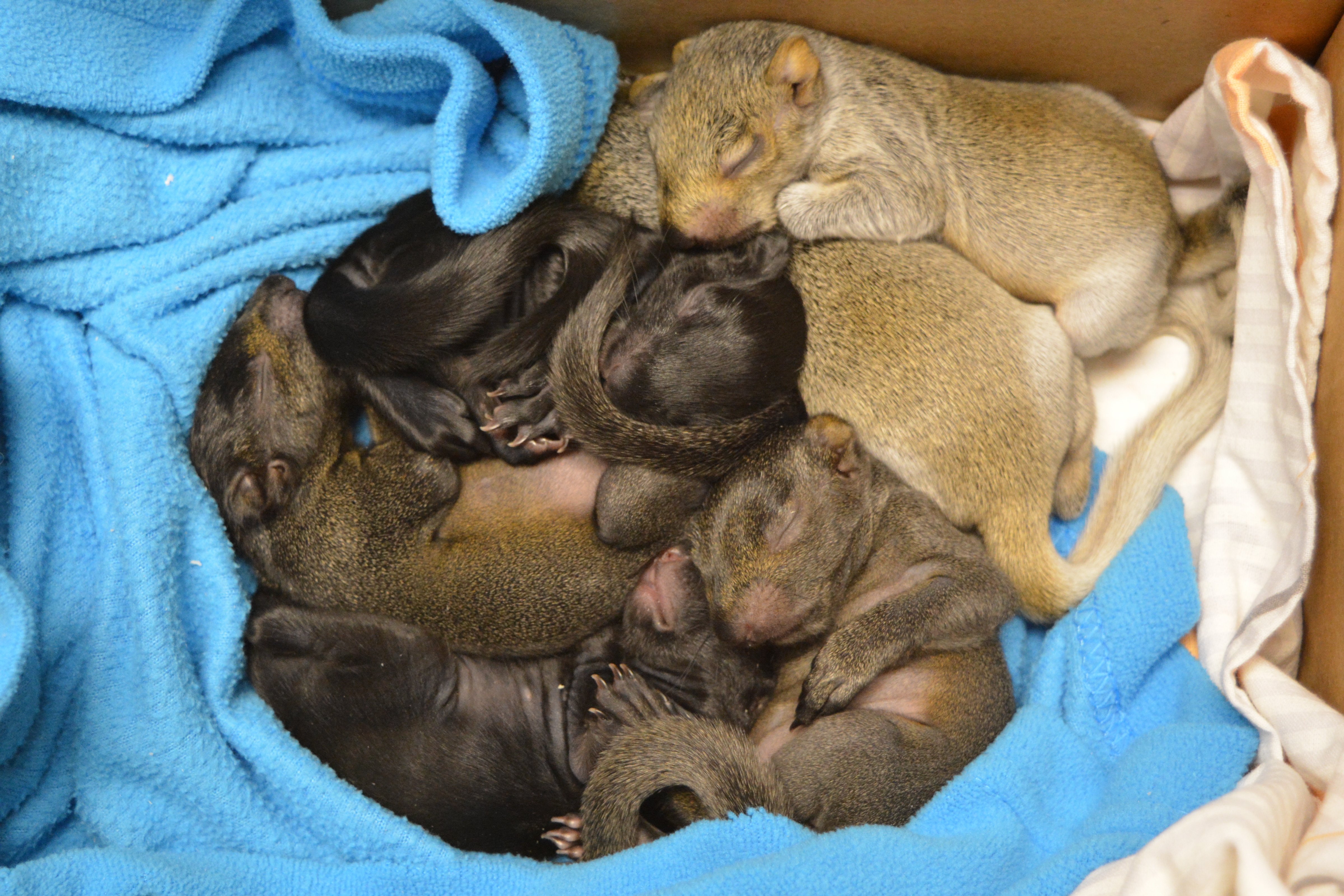Are you sure it’s a baby squirrel?
Older baby squirrels are easy to identify — they look like mini adult squirrels, but don’t have a bushy tail yet.
Newborn, naked baby squirrels can be distinguished from other babies by their long tail, small ears, and black toenails.
Baby Eastern grey squirrels come in lots of different colours, including black, brown, and grey. Red squirrels are smaller and can be identified by their white tummy, reddish back and faint black line that runs down their side. The care and rescue for both species are the same.
Not sure the baby you’ve found is a squirrel? Go back to our species selection page.
Get the baby squirrel contained
To keep the baby squirrel safe while you figure out how to help them, put the squirrel in a small cardboard box with a soft towel or t-shirt. Babies cannot regulate their own body temperature (they depend on mom for that), so they must be given a direct heat source, even on a warm day or when indoors. Heat source options include:
- a clean sock filled with dry, uncooked rice, and microwaved for one minute
- a plastic bottle from the recycling bin filled with hot tap water and wrapped in a tea towel or face cloth
- an electric heating pad set to “LOW” and placed under half of the box.
- several chemical hand warmers (e.g. Hot Paws) that stay warm for up to 8 hours
Do not give them any food or water – right now keeping them warm in a dark and quiet place is more important.




